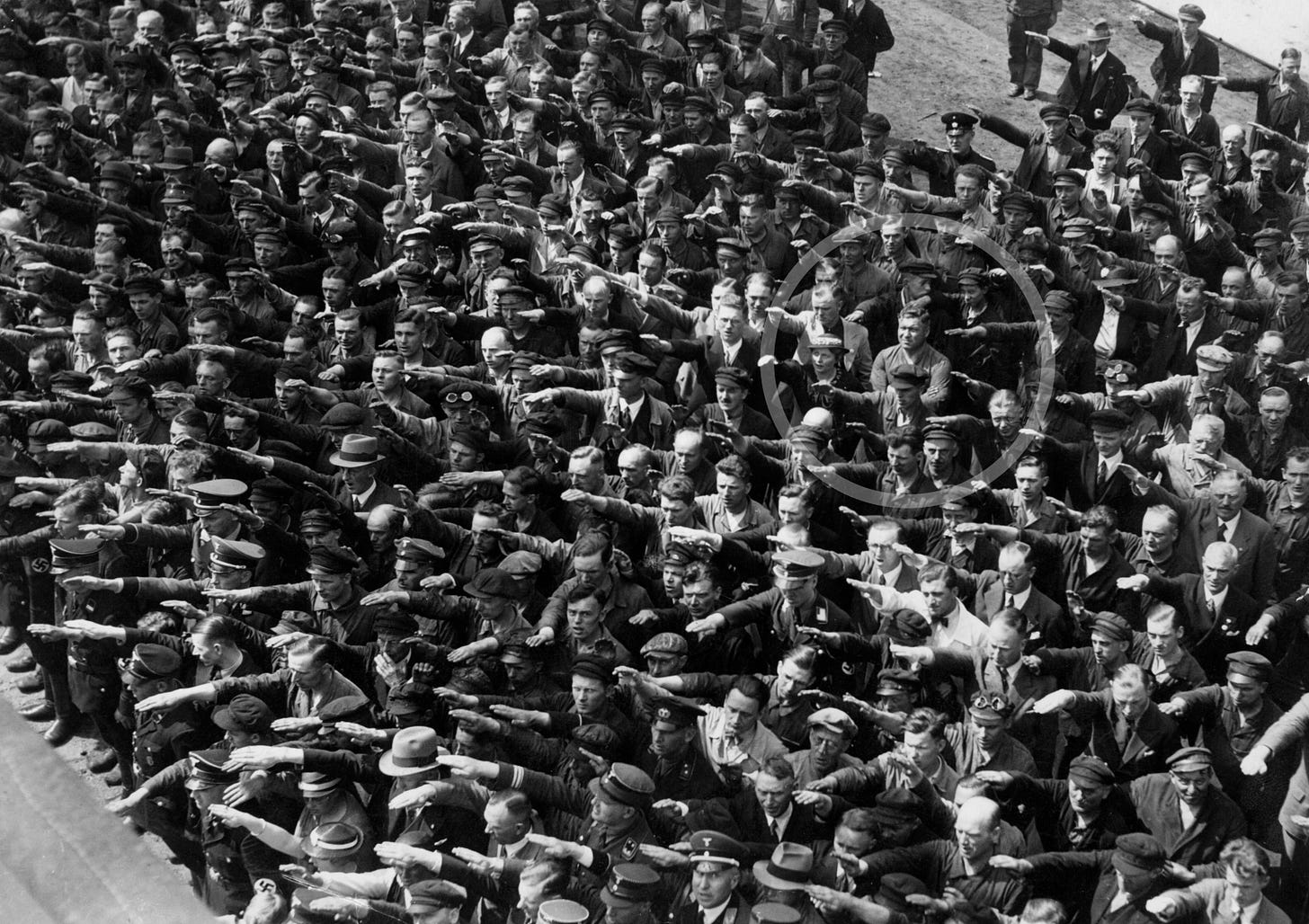
As the world commemorates the end of World War II, it may be a good moment to share this photo that many of you will likely recognize. In this picture, taken in Nazi Germany in 1936, one man is conspicuously not giving the Nazi salute. The photo is often used as an example of bravery and moral courage in the darkest of times. If you search the internet for "be this guy, " countless variations of the same image pop up.
"This guy" in the photo is often considered August Landmesser. And although we are not sure of his identity, the man in the photo was brave not to join the saluting. The Nazi salute was adopted as the official German greeting not long after the Nazis took control of Germany. It spread rapidly to public events, and special courts were set up in 1934 to punish anybody who refused to give the salute. The penalties included fines, intimidation, and incarceration in concentration camps.
But although a photo may tell a story better than a thousand words, it is equally valid that there is often a lot that you don't get from a first impression.
Joining the Nazi Party
The fascist leaders in Germany got their chance to destroy democracy and tens of millions of lives because of the widespread support they received in the early 1930s. And August Landmesser was one of them. He had joined the Nazi Party in 1931, hoping it would give him employment. But the monster of fascism has a habit of destroying its own ranks, and he was amongst the first to experience the brutality of the system he had once helped to get in place.
Heroes are often remembered for a single act of bravery or defiance. Still, it is essential to remember that they are all complex individuals with flaws and imperfections. August Landmesser is no exception; he is remembered for his refusal to perform the Nazi salute, but it is essential to acknowledge this other aspect of his life that is less heroic but no less critical.
Learning about his life explains his resilience and reminds us of the horrors of fascism. It's a reminder that remains highly relevant in a time when tens of millions in the United States are willing to support a cult for which you need a magnifying glass to find differences with some of the basic building blocks of various fascist regimes we have seen in the darkest days of human history.
Landmesser's story is far more complex than just that of a heroic figure at that one moment in 1936 or the non-hero who had joined the fascists several years earlier. His marriage to a Jewish woman and his subsequent persecution by the Nazi regime highlight the brutality and inhumanity of the Nazi regime, as well as the cost of resistance.
Loving a Jewish woman
August Landmesser was born on May 24th, 1910, in Germany. In 1931, he joined the Nazi Party and began working at the Blohm + Voss shipyard in Hamburg. In 1934, he met Irma Eckler, a Jewish woman, and the two fell in love. However, their relationship was deemed illegal by the Nazi regime due to the Nuremberg Laws, which prohibited marriages between Jews and non-Jews.
Keep reading with a 7-day free trial
Subscribe to The Planet to keep reading this post and get 7 days of free access to the full post archives.





